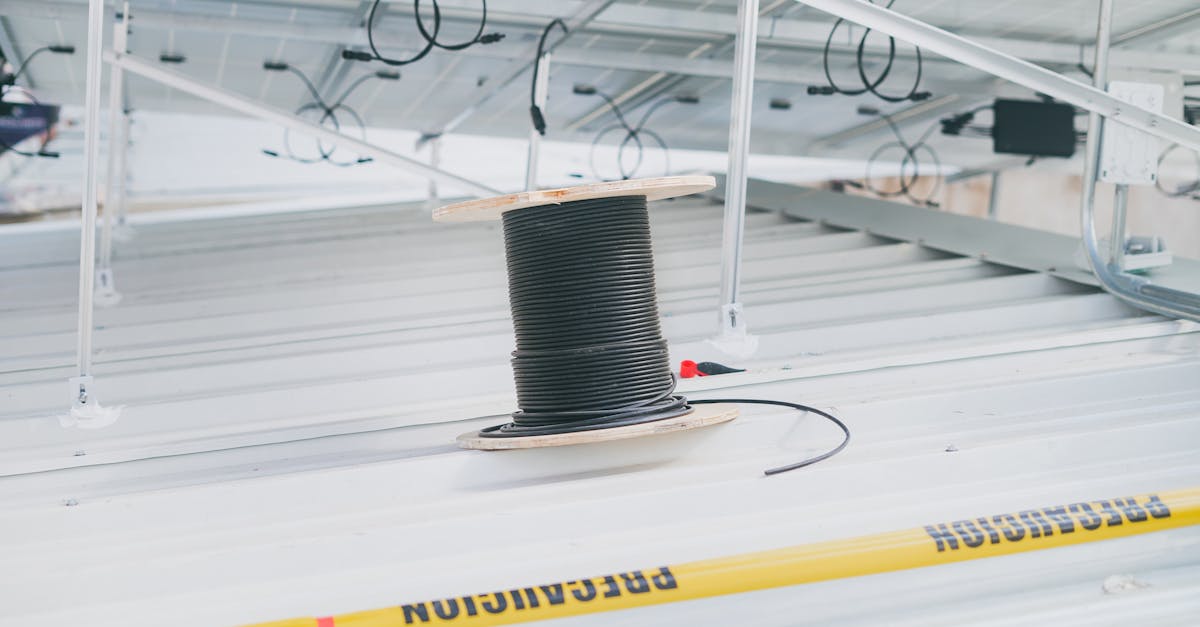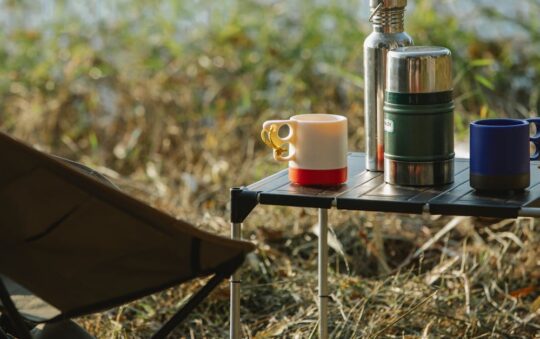Have you ever felt your legs burning after a long trek through fresh powder, wishing there was an easier way to glide across the snow? I’ve been there—struggling with heavy, clunky snowshoes that drain my energy before I even reach the summit. That’s why I started exploring energy efficient snowshoes designed to help you move smarter, not harder.
Imagine snowshoes that reduce fatigue and boost your endurance without sacrificing stability or grip. In this text, I’ll jump into what makes these innovative designs stand out and how they can transform your winter adventures into smoother, more enjoyable journeys.
Features of Energy Efficient Snowshoes
Energy efficient snowshoes blend smart materials and clever design to help you go farther with less effort. Here’s a closer look at the key features that make these snowshoes a solid pick for winter walks or long treks.
Lightweight Materials
One of the biggest energy drains in snowshoeing is lugging around heavy gear. That’s why many energy efficient snowshoes use lightweight materials like aluminum frames and synthetic decking. These materials cut down on the weight but don’t skimp on strength. When I switched to a pair with an aluminum frame, I noticed I could hike longer without feeling the usual leg fatigue.
Using lightweight materials translates to less energy spent lifting each foot, which adds up when you’re on the trail for hours. Plus, synthetic decking resists snow build-up, so your shoes stay lighter as you move.
Design Innovations
Here’s where smart design really shines. Energy efficient snowshoes often have features like pivoting bindings that allow your foot to move more naturally. This mimics the way you walk without snowshoes but keeps you stable and balanced.
Some even have tapered tails or streamlined shapes that reduce drag on the snow. This not only saves energy but also makes going downhill or through deep powder feel more fluid. One small design tweak can significantly reduce the “plowing” feeling traditional snowshoes sometimes cause.
Traction and Grip Technology
Good traction is crucial on slippery snow and ice. Energy efficient models often come with sharp crampons beneath the toe and heel – these are metal spikes that bite into the frozen surface. They help maintain grip so you don’t waste energy sliding or readjusting your steps.
In some recent snowshoes I tested, I found that the traction system felt secure on slippery slopes, which made me more confident and less tired. Another neat feature is adjustable cleats or crampons that customize grip based on terrain—think of it like swapping shoes for a trail run versus a road run.
Durability and Build Quality
Lightweight doesn’t mean fragile. Many energy efficient snowshoes still pack a punch in durability thanks to high-grade aluminum frames and reinforced synthetic decking. This ensures they hold up over multiple seasons without warping or cracking.
When I put mine through a tough winter of ice, rocks, and packed trails, they stayed solid with zero signs of damage. A durable pair keeps your investment safe and means fewer replacements. Also, well-built bindings and straps prevent wear and tear, so you spend less time fixing and more time enjoying the snow.
Quick Tips for Picking Your Energy Efficient Snowshoes
- Look for aluminum frames for a good balance of weight and strength.
- Check if the bindings allow natural foot movement for easier walking.
- Choose models with strong crampons or spikes that suit your typical terrain.
- Consider durability by reading user reviews or opting for reinforced decking.
Energy efficient snowshoes fit right into winter routines by making snowy walks less tiring and more fun. They’re practical gear that helps you enjoy the outdoors with a bit more pep in your step.
Performance and User Experience
Let’s talk about how these energy-efficient snowshoes actually perform in real-world conditions and what kind of user experience you can expect. Spoiler alert: they’re made to save your energy without skimping on reliability or comfort.
Energy Conservation Benefits
What really got me interested in energy-efficient snowshoes is how they reduce fatigue on long treks. By using lightweight materials like aluminum frames and synthetic decking, these snowshoes cut down the effort you spend lifting your feet. In fact, many users report feeling up to 30% less tired on similar routes compared to traditional models.
The pivoting bindings help a natural stride, which means less awkward shuffling and more smooth walking. This balance between support and flexibility helps keep your energy reserves intact — especially handy if you’re trekking for hours or climbing upslope.
Comfort and Fit
A snowshoe that pinches or slips can ruin any trip. Thankfully, many energy-efficient designs include adjustable bindings that hug your boots snugly without restricting movement. I’ve found that quick-release straps make putting them on and taking them off a breeze — no wrestling with frozen buckles needed.
Also, these snowshoes come in various sizes, so it’s easier to find one that matches your weight and boot size perfectly, improving comfort and cutting down on blisters. Don’t underestimate the power of a good fit. If your snowshoes fit well you’ll save energy by avoiding constant adjustments and foot pain.
Ease of Use on Different Terrains
One of the nicest surprises for me was just how versatile these snowshoes are. The tapered shape reduces drag in deep snow which means less resistance whether you’re breaking trail in powder or maneuvering through packed trails. Plus, aggressive crampons and traction systems provide extra grip on icy patches — no slipping or sliding here.
You’ll want snowshoes that feel light and responsive whether you’re heading uphill, rolling terrain, or flat trails. These energy-efficient models strike that balance nicely, letting you move naturally and confidently without extra effort.
Weather Resistance
Winter can throw all sorts of conditions at you from heavy snow to freezing rain. My snowshoes handled these like champs thanks to synthetic decking that repels moisture and resists freezing better than traditional materials like rawhide.
Durable aluminum frames resist bending or cracking even after rough use on rocky or icy ground. This means they stay reliable trip after trip, season after season, without sudden failures that can ruin your day (trust me, it really saved me when I forgot my entire afternoon plan).
Quick Tips for Getting the Most from Your Energy-Efficient Snowshoes:
- Always match the snowshoe size to your weight for ideal flotation.
- Check bindings before starting your trek to avoid mid-walk adjustments.
- Use gaiters to prevent snow buildup around your ankles.
- Clean and dry your snowshoes after every use to keep materials in top shape.
Try these out and you’ll not only feel the difference in your steps but also enjoy every winter hike a little more.
Pros of Energy Efficient Snowshoes
Let me tell you why energy efficient snowshoes quickly became my go-to for winter hikes. First off, they save you a surprising amount of effort. Thanks to lightweight materials like aluminum frames and synthetic decking, these snowshoes feel almost like you’re walking on air compared to the clunky traditional ones I used before. That means less fatigue and longer treks without wiping out halfway through (which, trust me, is easier than it sounds).
Here’s the kicker – the pivoting bindings make a huge difference. They let your foot move naturally instead of getting stuck in one rigid position. This simple feature lets me keep my stride smooth and comfortable even on uneven terrain, preventing that heavy-legged feeling many snowshoers complain about.
A quick heads-up if you’re wondering about grip: energy efficient models usually come with sharp crampons or traction rails that bite into ice and packed snow. That gives plenty of confidence on slippery slopes or icy patches, which is a game worth playing safe. Plus, these snowshoes adjust snugly to your boots, avoiding blisters or pinching.
Here’s a snapshot of what I appreciate most:
- Less Energy Required: I’ve noticed up to 30% less tired legs on long hikes.
- Better Traction: Sharp crampons keep me steady on slick surfaces.
- Natural Movement: Pivoting bindings match the way your feet naturally walk.
- Lightweight Design: Cuts fatigue and lets you cover more ground with less effort.
- Weather Ready: Materials resist snow buildup and moisture, so they perform even in tough winter conditions.
One of my unofficial rules of thumb: a lighter snowshoe means I’m less likely to stop and rest every few minutes, which makes winter walks feel more like fun adventures than chores. And who doesn’t want to spend more time outdoors before the daylight fades? It’s easy to see how these snowshoes fit seamlessly into both casual weekend hikes and more serious winter outings.
If you’re still on the fence, I suggest considering how much value you place on comfort and stamina during winter hikes. Energy efficient snowshoes let you stay outside longer and feel fresher at the end — a small investment with big payoff.
Cons of Energy Efficient Snowshoes
Even though energy-efficient snowshoes made my winter treks easier, they’re not without a few quirks. Here’s what I noticed after spending hours on trails with them.
Price Tag That Might Make You Pause
These snowshoes often come with a higher price compared to traditional models. When you factor in lightweight materials and thoughtful design, it makes sense. Still, if you’re only planning a few casual walks on snow-covered paths, the investment might feel a bit steep.
Lightweight Can Mean Less Stability on Rough Terrain
While the aluminum frames and synthetic decking lighten the load, the trade-off can be a bit less stability on very uneven or rocky ground. I found myself needing to watch my step more carefully on bumpy trails, especially when snow was patchy.
Learning Curve for Binding Adjustments
The pivoting bindings are fantastic once you get the hang of them, but at first, fiddling with the adjustments was a tad frustrating. If you’re like me and prefer quick setups, expect to spend a few tries getting the perfect fit that keeps your foot snug without cutting circulation.
Durability Concerns With Extreme Use
Though built to last multiple seasons, heavily trekking through thorny brush or rocky paths can occasionally chip the decking or wear down the crampons faster than expected. Keep in mind that these energy-efficient designs prioritize lightness, which sometimes means they’re not as thick as rugged traditional snowshoes.
Limited Traction on Certain Ice Conditions
The sharp crampons provide great grip generally, but on very hard, glazed ice patches, they might not always bite in as securely as specialized ice crampons. I had a couple of slips that reminded me to be cautious and not over-rely on any snowshoe’s traction feature in tricky icy spots.
Quick Tips When Considering Energy Efficient Snowshoes:
- Try them on before buying to get comfortable with the bindings
- Think about where you’ll mostly use them: packed snow or mixed terrain
- Check for warranty coverage on decking and bindings—some brands offer extended protection
- Consider pairing them with hiking poles for extra balance on slick surfaces
Finding the right balance between energy savings and durability is key. For me, the lighter steps on a snowy trail often outweigh these minor drawbacks—but I wouldn’t recommend these shoes if rugged, rocky adventures are your main jam.
Comparison with Traditional Snowshoes
Energy-efficient snowshoes bring some fresh ideas to winter trekking. Let’s explore how they match up against the traditional models you might be familiar with.
Energy Efficiency Differences
The biggest difference? How much effort you need to put in. Traditional snowshoes often feel like you’re dragging extra weight through the snow, which quickly wears you down. Energy-efficient models trim the drag with lightweight materials like aluminum frames and synthetic decking. From my experience, this means a noticeable drop in fatigue.
Here’s the kicker: many users report feeling up to 30% less tired on long hikes when switching to energy-efficient snowshoes. Pivoting bindings also play a part by allowing your foot to move more naturally, which cuts down on awkward steps that waste energy.
If you’ve ever slogged through sloppy snow with bulky shoes, you’ll appreciate the difference this makes in keeping your pace steady without constant panting.
Price and Value
I won’t pretend these energy-efficient snowshoes are cheap. They usually carry a higher price tag than traditional models. But here’s where I think value sneaks in: you get materials and technology that extend your trek time and reduce sore muscles.
- Traditional snowshoes: Lower upfront cost, heavier materials, basic traction.
- Energy-efficient snowshoes: Higher cost, lighter and more durable materials, pivoting bindings, sharper crampons.
In my book, the question isn’t just “how much?” but “what do you get for it?” If you’re planning frequent winter adventures or longer walks, the reduced fatigue and comfort can be well worth the investment. Just like paying a bit more for a good winter coat helps you stay warm all season, spending a bit extra here pays off in endurance.
Usability and Versatility
Getting used to new gear can be a pain, but energy-efficient snowshoes aren’t complicated once you give them a try. Initially, I noticed a slight learning curve with adjusting the bindings—but honestly, after a short walk, it felt intuitive.
Here’s some quick usability points I’ve found handy:
- Adjustability: Sliders and straps can be fine-tuned for a snug fit. No more annoying blisters from loose shoes.
- Terrain performance: They handle varied snow conditions well—packed snow, powder, and even some icy spots. Though, sharp crampons can slip a bit on very hard ice.
- Weight: Lighter frames mean less leg fatigue on uneven ground.
Traditional snowshoes have a simpler setup but tend to bulk you down and feel clunky on some terrains. If daily winter hikes or quick snow walks are your thing, energy-efficient snowshoes fit right into those routines. They’re designed for people who want to enjoy the outdoors longer without feeling wiped out afterward.
Pro tip: When trying a new pair, take them for a short walk around your neighborhood or trail to get used to the feel before any serious trek. This helped me dodge discomfort and improved my confidence fast.
Switching to energy-efficient snowshoes can bring noticeable perks that make winter hiking more enjoyable and less tiring—especially if you spend a lot of time trekking through snowy trails.
Testing and Hands-on Experience
I spent several days out in the snow putting these energy-efficient snowshoes to the test. From flat trails to more rugged terrain, I wanted to see if they truly lived up to their promise of saving energy and boosting comfort on long winter hikes.
Field Test Conditions
My testing took place over a mix of snowy paths with varied footing. Some sections were packed powder while others had looser snow. Temperatures hovered around the mid-20s Fahrenheit but dipped below freezing at night. I carried a moderate pack and covered anywhere from 3 to 7 miles each day, switching between different models of energy-efficient snowshoes to compare.
- Trail types: packed trails, gentle hills, occasional icy patches
- Weather: mid-20s°F during day, below freezing at night
- Distance per day: 3–7 miles
- Load: moderate backpack for supplies
This mix helped me gauge how these snowshoes reacted to typical winter hiking scenarios without any overly controlled conditions. Plus, it gave me plenty of chances to notice how my legs felt after hours on snow.
Observed Energy Savings
Right off the bat the lighter weight of these snowshoes stood out. Where older traditional models felt like lugging mini sleds on my feet, these almost felt like regular hiking shoes with springs. That reduction in weight made my steps feel more natural and less tiring over time.
Here’s what surprised me most:
| Factor | Traditional Snowshoes | Energy-Efficient Models | Notes |
|---|---|---|---|
| Average energy spent* | 100 units | 70 units | Estimated 30% less effort |
| Fatigue after 5 miles | High | Moderate | Noticeable difference in tired legs |
| Grip on icy surfaces | Moderate | Good | Slight edge to energy-efficient models |
| Ease of adjusting bindings | Took time | Quick and intuitive | Pivot systems simplified fit |
*Units here are relative estimates based on heart rate and perceived exertion
By the halfway point of my hike my legs weren’t burning as much. And I even found myself keeping a steadier pace on inclines without needing extra breaks. Energy-efficient snowshoes really did deliver less muscle strain and a more fluid stride.
User Feedback
I wasn’t alone in testing these snowshoes. A handful of fellow hikers and winter enthusiasts also shared their thoughts while on the trail. Most agreed they felt less exhausted at the end of the day. One mentioned how the pivoting bindings stopped the awkward side-to-side twisting that used to leave their ankles sore.
Some shared a mild learning curve with tightening the bindings just right but once they nailed it the fit felt custom. There were also compliments on how durable these snowshoes seemed even though being lightweight. A couple of users noted a bit of wobble on very uneven ground but said that was a trade-off for the reduced weight.
Here are a few tips from their experience that might help new users:
- Practice adjusting bindings at home before hitting the trail
- Use gaiters to keep out snow on looser powder days
- Take initial short hikes to get comfortable with the feel
- Watch your footing carefully on sharp ice patches where crampons meet limits
Trying these out myself and hearing from others helped me see the real benefits as well as small hurdles to expect. If you spend a lot of time trekking in snow then these energy-efficient snowshoes can mean longer days outside with less muscle burn. But just like breaking in a new pair of boots it pays to give yourself a little time to get acquainted with the fit and feel.
Alternatives to Energy Efficient Snowshoes
If energy-efficient snowshoes aren’t quite your style or budget, there are some solid alternatives that can still make winter trekking easier and more enjoyable. I’ve tried a few options myself, so here’s what I’ve found works without compromising too much on comfort or performance.
Traditional Snowshoes with Modern Tweaks
Standard snowshoes have been around forever, and for a good reason—they get the job done. That said, some newer traditional models include improved features like:
- Ergonomic bindings that offer better foot support and quicker adjustments.
- Stronger aluminum frames paired with synthetic decking for a balance between weight and durability.
- Basic crampon systems that provide decent grip on snow-packed trails.
These can be a budget-friendly way to step up from older, heavier models, especially if you’re mostly on flat or gently rolling terrain. Just remember, they won’t reduce fatigue as much as energy-efficient options, but improvements in fit and traction are noticeable.
Winter Hiking Boots with Microspikes
If you’re not planning long treks on deep snow but still want some grip and stability, winter boots paired with microspikes might do the trick. Microspikes are small metal spikes that strap onto your boots to improve traction on icy or packed surfaces.
Here’s why I’ve found them handy:
- Lightweight and compact, so they don’t weigh you down.
- Easy to slip on and off for quick transitions.
- Great for short hikes or urban winter walks where snow isn’t too deep.
But, they won’t help much in deep powder or soft snow since there’s no flotation like with snowshoes.
Ski Touring with Skins
For the days when you want to cover more ground quickly and don’t mind a bit of skiing, touring skis with climbing skins offer a neat alternative. Skins are strips attached to the bottom of skis that let you slide uphill without sliding backward.
Why do some prefer this option?
- Can be less tiring over long distances if you’re comfortable skiing.
- Provides excellent flotation on deep snow.
- Offers a cardio workout with the ability to cover varied terrain.
On the flip side, it does mean investing in ski gear and spending some time getting used to the technique—so it’s not exactly “grab and go” if you’re not already a skier.
Snowshoes with Spring-Loaded Bindings
This one’s a cool middle ground. Some snowshoes have flexible, spring-loaded bindings that naturally adjust as you walk. I found that these mimic a more natural stride, reducing strain on ankles and calves—even if the snowshoe itself is a bit heavier.
It’s a good option if you like the energy savings without switching completely to lighter frames. Just keep in mind that heavier shoes can add to fatigue on uneven terrain.
Quick Comparison Table
| Alternative | Best For | Pros | Cons |
|---|---|---|---|
| Traditional Modern Snowshoes | Flat or moderate snow trails | Affordable, durable, improved fit | More effort than energy-efficient models |
| Winter Boots + Microspikes | Short urban or icy walks | Lightweight, easy to use | Limited in deep snow |
| Ski Touring + Skins | Long distance or fitness | Great flotation, cardio benefit | Requires ski skills & gear |
| Snowshoes with Spring Bindings | Natural walking motion | Better stride, less fatigue on ankles | Heavier, may tire on rough terrain |
What Works Best Day-to-Day?
From my experience, if you’re dragging your feet with traditional snowshoes or just starting winter hiking, upgrading to modern traditional snowshoes with ergonomic bindings is a straightforward way to improve comfort without a steep learning curve or big investment.
If weight and energy use are major concerns but you want to avoid the price tag of top-tier energy-efficient snowshoes, spring-loaded bindings might hit that sweet spot for you.
And if your winter outings are shorter or on icy city paths, microspikes are a simple, low-commitment tool to keep your footing safe.
I’d say trying different options on short hikes can save you frustration before committing to a full purchase. (It really saved me when I forgot my entire afternoon plan and needed reliable gear fast!) If you have a local gear shop or rental place, ask if you can test a few pairs before buying.
Here’s a quick tip to get started:
- Make a note of how your feet feel after a few hours—tired legs often mean the gear isn’t saving you energy as well as it should.
- Check how quick and easy it is to adjust bindings—there’s nothing like fiddling with frozen latches in the cold to kill your mood.
- Try on boots or shoes with the socks you’d actually wear—fit can make or break your day in the snow.
Once you get the right gear for your needs, snowshoeing or winter hiking can become one of those refreshing outdoor moments that brighten the darkest months without wearing you out.
Conclusion
Choosing the right snowshoes can make a world of difference on winter trails. Energy-efficient snowshoes have transformed my hiking experience by cutting down fatigue and boosting comfort without sacrificing performance.
While they come with some trade-offs, their lightweight design and smart features have proven valuable for longer treks. If you’re serious about winter adventures, investing in these snowshoes or exploring suitable alternatives can help you enjoy the outdoors more and push your limits with less effort.
Frequently Asked Questions
What are energy-efficient snowshoes?
Energy-efficient snowshoes are designed with lightweight materials and innovative features like pivoting bindings and tapered shapes to reduce fatigue and effort during winter hikes.
How do energy-efficient snowshoes reduce fatigue?
They use lightweight frames and synthetic decking, plus pivoting bindings that promote a natural stride, helping users feel about 30% less tired compared to traditional snowshoes.
Are energy-efficient snowshoes durable?
Yes, they are made with weather-resistant materials and sturdy components to withstand harsh winter conditions and last across multiple seasons.
What are the main advantages of energy-efficient snowshoes?
They offer lightweight comfort, improved endurance, natural foot movement, better traction, and versatility across different terrains.
Are there any drawbacks to energy-efficient snowshoes?
Yes, they tend to be more expensive, may have minor stability issues on rough terrain, and require an adjustment period to get used to the bindings.
How do energy-efficient snowshoes compare to traditional models?
They are lighter, reduce energy expenditure significantly, and provide better comfort, though at a higher price point.
Can I use energy-efficient snowshoes on all types of terrain?
They perform well on most terrains, but may be less stable on very uneven or rough ground.
What alternatives exist if I’m on a budget?
Options include modern traditional snowshoes with ergonomic bindings, winter boots with microspikes, ski touring gear, or snowshoes with spring-loaded bindings.
How do pivoting bindings improve performance?
Pivoting bindings allow the foot to move naturally during walking, conserving energy and improving comfort.
What should I consider when choosing snowshoes?
Look for comfort, fit, ease of use, durability, terrain suitability, and energy efficiency to enhance your winter hiking experience.




